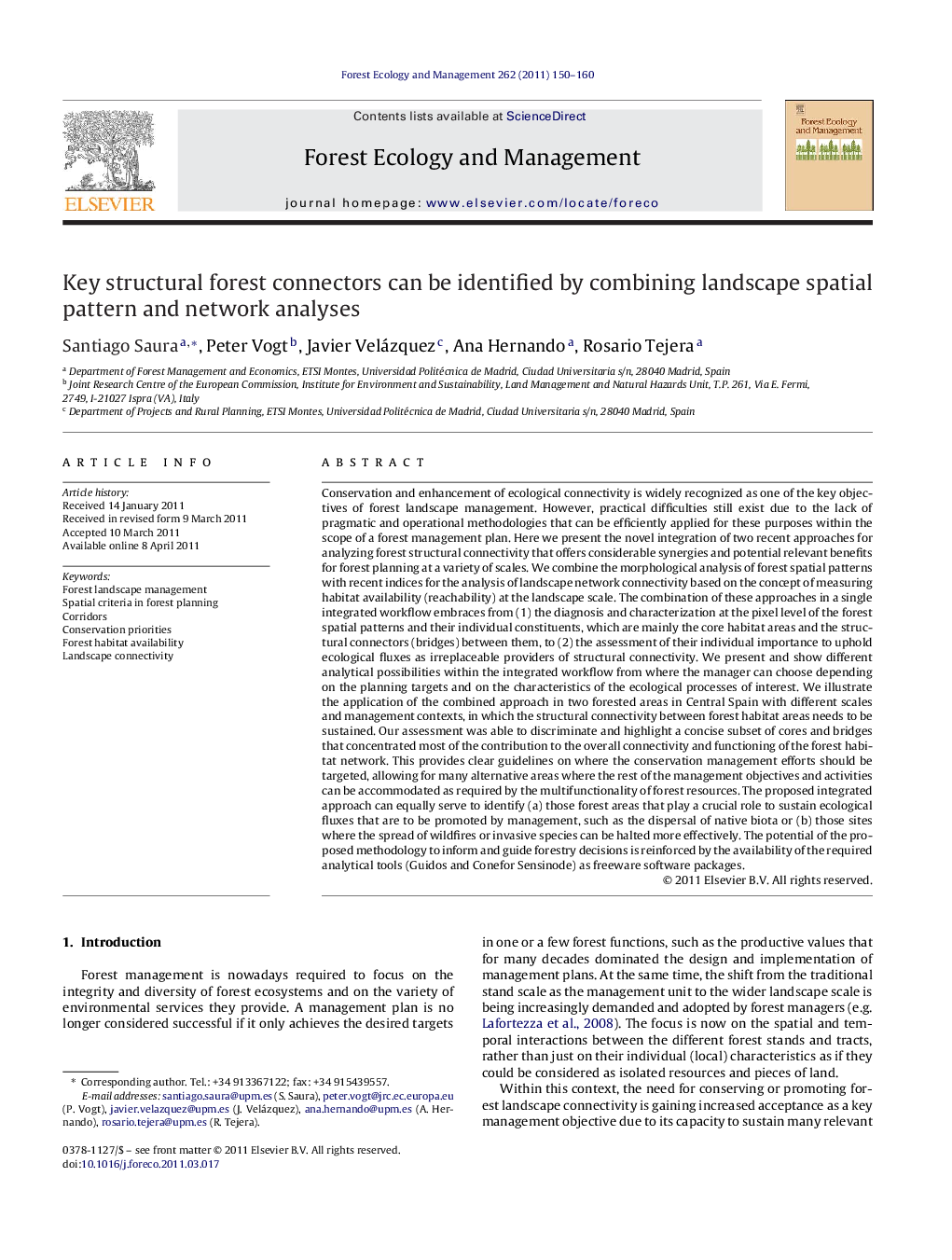| Article ID | Journal | Published Year | Pages | File Type |
|---|---|---|---|---|
| 87954 | Forest Ecology and Management | 2011 | 11 Pages |
Conservation and enhancement of ecological connectivity is widely recognized as one of the key objectives of forest landscape management. However, practical difficulties still exist due to the lack of pragmatic and operational methodologies that can be efficiently applied for these purposes within the scope of a forest management plan. Here we present the novel integration of two recent approaches for analyzing forest structural connectivity that offers considerable synergies and potential relevant benefits for forest planning at a variety of scales. We combine the morphological analysis of forest spatial patterns with recent indices for the analysis of landscape network connectivity based on the concept of measuring habitat availability (reachability) at the landscape scale. The combination of these approaches in a single integrated workflow embraces from (1) the diagnosis and characterization at the pixel level of the forest spatial patterns and their individual constituents, which are mainly the core habitat areas and the structural connectors (bridges) between them, to (2) the assessment of their individual importance to uphold ecological fluxes as irreplaceable providers of structural connectivity. We present and show different analytical possibilities within the integrated workflow from where the manager can choose depending on the planning targets and on the characteristics of the ecological processes of interest. We illustrate the application of the combined approach in two forested areas in Central Spain with different scales and management contexts, in which the structural connectivity between forest habitat areas needs to be sustained. Our assessment was able to discriminate and highlight a concise subset of cores and bridges that concentrated most of the contribution to the overall connectivity and functioning of the forest habitat network. This provides clear guidelines on where the conservation management efforts should be targeted, allowing for many alternative areas where the rest of the management objectives and activities can be accommodated as required by the multifunctionality of forest resources. The proposed integrated approach can equally serve to identify (a) those forest areas that play a crucial role to sustain ecological fluxes that are to be promoted by management, such as the dispersal of native biota or (b) those sites where the spread of wildfires or invasive species can be halted more effectively. The potential of the proposed methodology to inform and guide forestry decisions is reinforced by the availability of the required analytical tools (Guidos and Conefor Sensinode) as freeware software packages.
Graphical abstractFigure optionsDownload full-size imageDownload as PowerPoint slideHighlights► Novel integration of recent approaches for analyzing forest structural connectivity. ► Finds core areas and corridors that act as irreplaceable connectivity providers. ► Highlights a concise subset of key cores and corridors where to focus management ► Different network scenarios are offered as suited to different management contexts.
